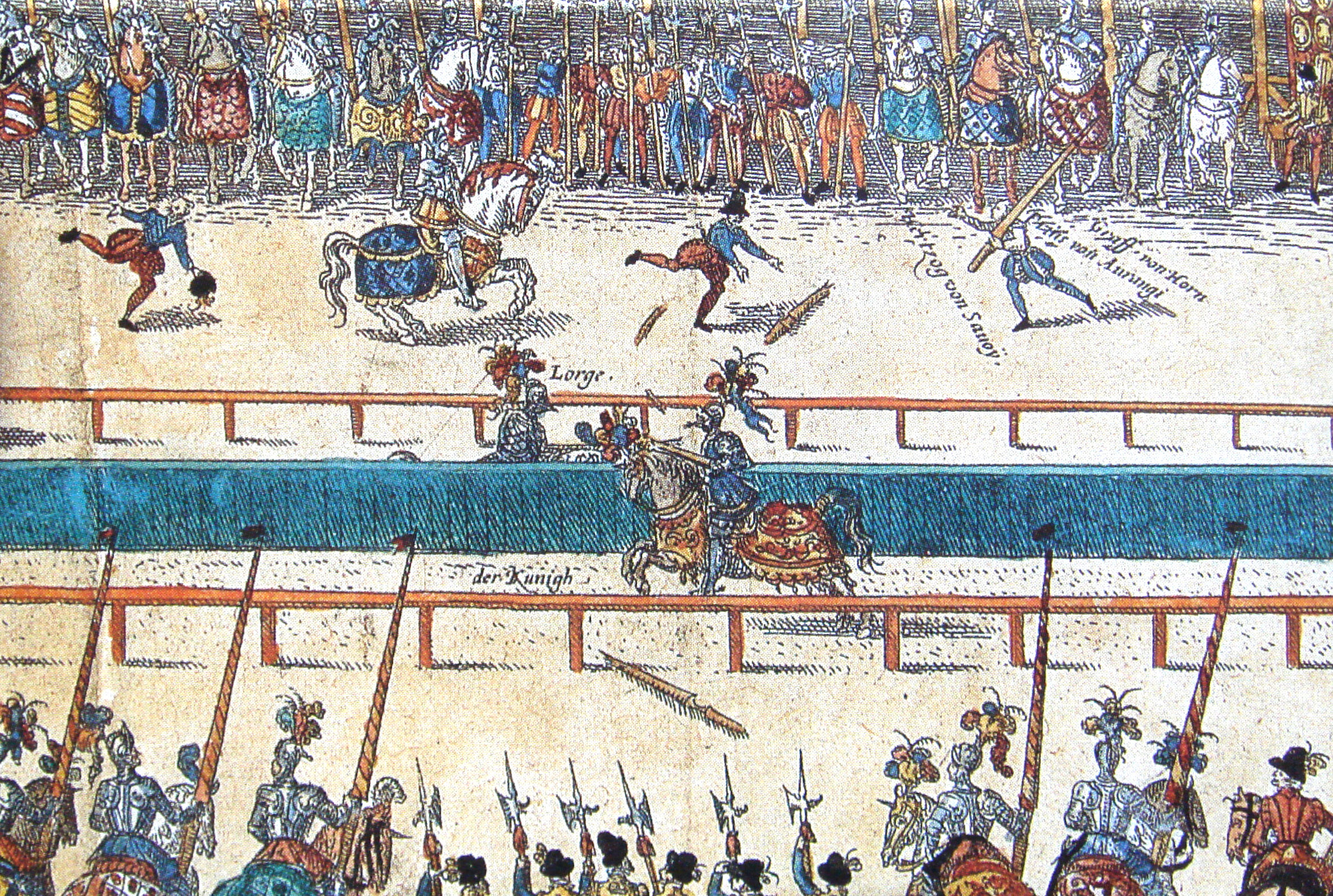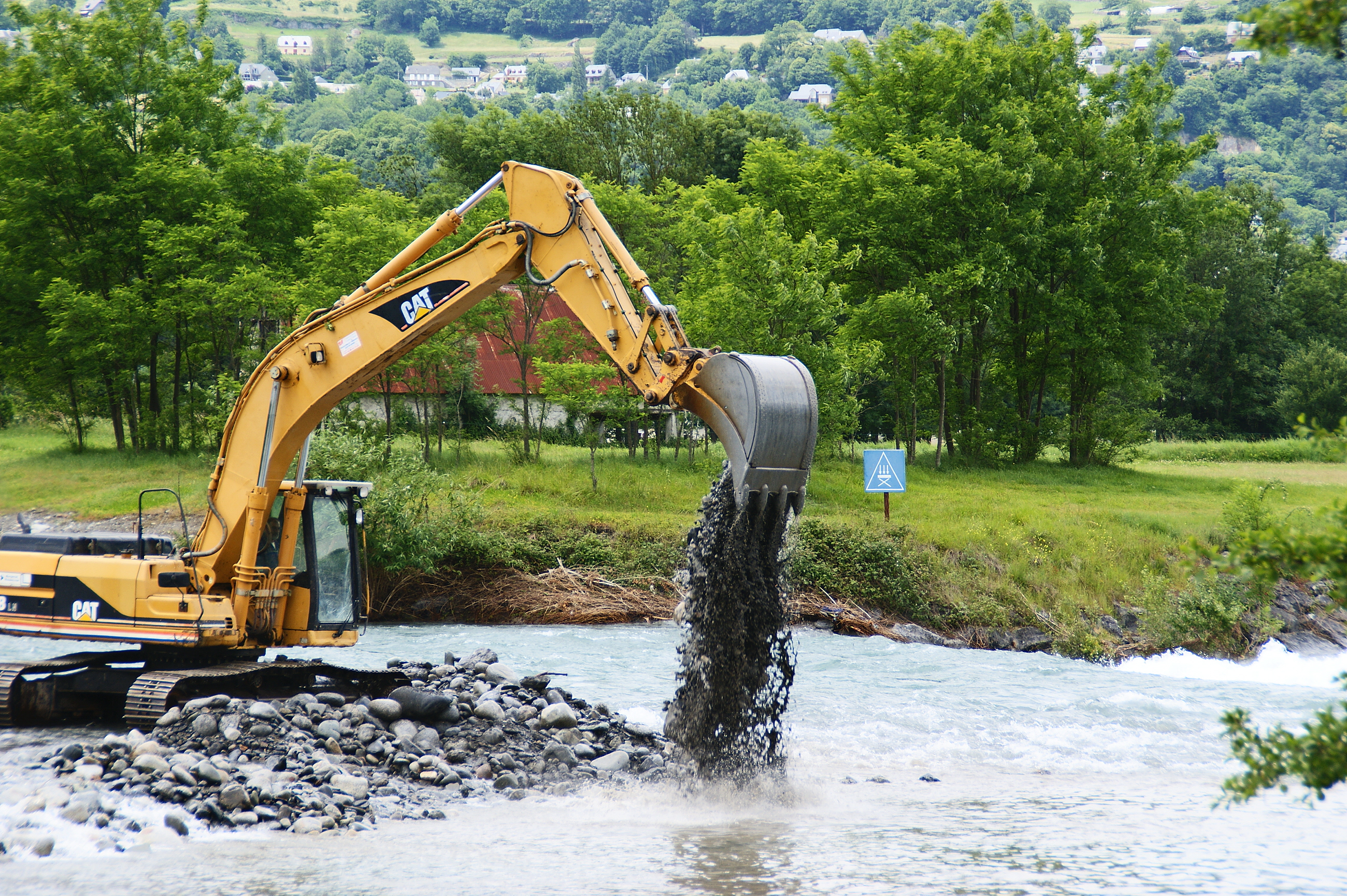|
Battle Of Orthez 1569
The battle of Orthez was fought during the French Wars of Religion, between August 11 and 14, 1569. Huguenot forces under the leadership of Gabriel, comte de Montgomery, Gabriel de Montgomery defeated Royalist forces under Antoine de Lomagne, vicomte de Terride in Kingdom of Navarre, French Navarre. Following the battle, Huguenot forces killed many of their Catholic prisoners. Background In the later half of the sixteenth century, all Aquitaine above the Garonne except for Bordeaux was in Protestant hands. At that time, Orthez was the largest and most dynamic city of Béarn. It was a market town which served as the main funnel for products making their way to Bayonne for export. Orthez was therefore quite wealthy. One wealthy Protestant, Adrien-Arnaud de Gachassin, had gifted his mansion in Orthez to Jeanne d'Albret, Jeanne d' Albret in 1555 (today, it is called Maison of Jeanne d' Albret and has become a museum of how wealthy Protestants lived). The Huguenots were therefore ... [...More Info...] [...Related Items...] OR: [Wikipedia] [Google] [Baidu] |
French Wars Of Religion
The French Wars of Religion were a series of civil wars between French Catholic Church, Catholics and Protestantism, Protestants (called Huguenots) from 1562 to 1598. Between two and four million people died from violence, famine or disease directly caused by the conflict, and it severely damaged the power of the French monarchy. One of its most notorious episodes was the St. Bartholomew's Day massacre in 1572. The fighting ended with a compromise in 1598, when Henry of Navarre, who had converted to Catholicism in 1593, was proclaimed Henry IV of France, King Henry IV of France and issued the Edict of Nantes, which granted substantial rights and freedoms to the Huguenots. However, Catholics continued to disapprove of Protestants and of Henry, and his assassination in 1610 triggered a fresh round of Huguenot rebellions in the 1620s. Tensions between the two religions had been building since the 1530s, exacerbating existing regional divisions. The death of Henry II of France in J ... [...More Info...] [...Related Items...] OR: [Wikipedia] [Google] [Baidu] |
Gabriel De Lorges, Count Of Montgomery
Gabriel de Lorges, Count of Montgomery, Lord of Lorges and Ducey (5 May 153026 June 1574), was a French nobleman of Scottish extraction and captain of the Scots Guard of King Henry II of France. He is remembered for mortally injuring Henry II in a jousting accident and subsequently converting to Protestantism, the faith that the Scots Guard sought to suppress. He became a leader of the Huguenots. In French-language contexts, his name is spelled Montgommery. Career On 30 June 1559, during a jousting match to celebrate the Peace of Cateau Cambrésis between Henry II and his longtime Habsburg enemies, and two major marriages, namely that of Marguerite, the king's sister, with the Duke of Savoy Emmanuel-Philibert, and that of Elisabeth, the king's eldest daughter, with Philip II, king of Spain, a splinter of wood from Montgomery's shattered lance pierced Henry's eye and entered his brain, fatally injuring him. From his deathbed Henry absolved Montgomery of any blame, before dying o ... [...More Info...] [...Related Items...] OR: [Wikipedia] [Google] [Baidu] |
Tarbes
Tarbes (; Gascon language, Gascon: ''Tarba'') is a Communes of France, commune in the Hautes-Pyrénées Departments of France, department in the Occitania (administrative region), Occitanie Regions of France, region of southwestern France. It is the capital of Bigorre and of the Hautes-Pyrénées. It has been a commune since 1790. It was known as ''Turba'' or ''Tarba'' in Ancient Rome, Roman times. Tarbes is part of the historical region of Gascony. Formerly of strong industrial tradition, Tarbes today tries to diversify its activities, particularly in aeronautics and high tech around the different zones of activities which are increasing. The recent development of Tarbais beans and other regional specialties also shows a willingness to develop the agri-food industry thus justifying its nickname of "market town". Its 42,888 demonym, inhabitants are called ''Tarbaises'' and the ''Tarbais''. It is the seat of the diocese of Tarbes-et-Lourdes. The 1st Parachute Hussar Regiment and 3 ... [...More Info...] [...Related Items...] OR: [Wikipedia] [Google] [Baidu] |
Artix, Pyrénées-Atlantiques
Artix (; ) is a commune in the Pyrénées-Atlantiques department in the Nouvelle-Aquitaine region of south-western France. Geography Artix is located some 12 km north-west of Lescar and 14 km south-east of Orthez. Access to the commune is by main road D817 from Lacq in the north-west passing through the commune and south of the town and continuing south-east to Denguin. Access to the town from the D817 is on the D280 which links the two ends of the bypass. There are also the D263 road going north to Urdès, the D663 going north-east to Serres-Sainte-Marie, the D32 going east to Cescau, and the D281 going south-east to join the D33 north-west of Noguères. The A64 autoroute also passes through the north-eastern corner with Exit 9 exiting to the D817 in the commune. The SNCF Toulouse-Bayonne railway line also passes through the commune with Artix station just south of the town centre. The ''Interurban network of Pyrénées-Atlantiques'' busline has two routes p ... [...More Info...] [...Related Items...] OR: [Wikipedia] [Google] [Baidu] |
Gave De Pau
The Gave de Pau () is a river of south-western France. It takes its name from the city of Pau, through which it flows. The river is long ( including the Gaves réunis), and although its source is considered to be on the Cirque de Gavarnie in the Pyrenees mountains waters feed it from the slopes of Monte Perdido in Spain. From the Lago Helado on the slopes of Perdido water works through a cave system to emerge from the Resurgence Brulle via the Grotte Devaux on the French side of the border. The Gave de Pau joins the Gave d'Oloron in Peyrehorade to form the about long Gaves réunis (united Gaves), which is a left tributary of the Adour. The Gaves réunis is often considered to be part of the Gave de Pau. Its main tributaries are the Béez, the Néez, the Ouzoum and the Ousse. The Gave de Pau flows through the following '' départements'' and towns: * Hautes-Pyrénées Hautes-Pyrénées (; Gascon/ Occitan: ''Nauts Pirenèus / Hauts Pirenèus'' awts piɾeˈnɛʊs ; ... [...More Info...] [...Related Items...] OR: [Wikipedia] [Google] [Baidu] |
Navarrenx
Navarrenx (; ; , ) is a town and commune in the French department of Pyrénées-Atlantiques and the region of Nouvelle-Aquitaine. The demonym is Navarre. Since 2014, the town has been in the association Les Plus Beaux Villages de France. It is located in the cultural area of Béarn. Etymology The name Navarrenx comes from ''sponda Navarrensi'', meaning the "bedstead of Navarre" or "House of the Navarreses". According to linguist Michel Grosclaude it may have meant the edge of the Navarre. There may be kinship between the Basque radical ''Navarre'' and Navarrenx, but Basque philologists hesitate to link the several etymologies. The first written mention of the name of the city lies in a charter of 1078. Navarrenx (Navarrensis) is mentioned five times. History The earliest history of the site dates to the first century. Navarrenx is reported in a cartulary of the eleventh century under the name of Sponda-Navarrensis. There was a long-standing agreement between Centulle V, Visc ... [...More Info...] [...Related Items...] OR: [Wikipedia] [Google] [Baidu] |
Gave (placename Element)
The French word ''gave'', as used in the western part of the Pyrenees, is a generic name referring to a torrential river. In the central part of the mountain range, the term for this is '' neste''. The word ''gave'' derives from the old Gascon ''gabar'', attested as ''gabarrus'' in medieval Latin.Theodule (8th century - 9th century) Based on a pre-Celtic root ''*gab'' meaning 'hollow' (thus 'throat'), it refers to lower places, valleys and rivers. It is widely found in placenames of Gascony as Gabardan, Gavarret, Gavarnie, Gabas, etc. The name of the ''Gabali The Gabali (Gaulish: *''Gabli'') were a Gauls, Gallic tribe dwelling in the later Gévaudan region during the La Tène culture, Iron Age and the Roman period. Name They are mentioned as ''Gabalos'' or ''Gabalis'' by Julius Caesar, Caesar (mid-1 ...'' (the ancient people living in Gévaudan) is supposed to be related to this stem. The final ''-r'' is missing because it was lost in Gascon: gabar > gabà > . Gaves i ... [...More Info...] [...Related Items...] OR: [Wikipedia] [Google] [Baidu] |
Arrondissement Of Foix
The arrondissement of Foix is an arrondissement of France in the Ariège department in the Occitania region. It has 113 communes. Its population is 47,794 (2021), and its area is . Composition The communes of the arrondissement of Foix, and their INSEE codes, are: # Albiès (09004) # Alliat (09006) # Appy (09012) # Arabaux (09013) # Arignac (09015) #Arnave (09016) # Artigues (09020) # Artix (09021) # Ascou (09023) #Aston (09024) # Aulos-Sinsat (09296) #Auzat (09030) # Axiat (09031) # Ax-les-Thermes (09032) # Baulou (09044) #Bédeilhac-et-Aynat (09045) # Bénac (09049) # Bestiac (09053) # Bompas (09058) # Le Bosc (09063) # Bouan (09064) # Brassac (09066) # Burret (09068) # Les Cabannes (09070) # Calzan (09072) # Capoulet-et-Junac (09077) # Carcanières (09078) # Caussou (09087) # Caychax-et-Senconac (09088) #Cazaux (09090) # Cazenave-Serres-et-Allens (09092) # Celles (09093) # Château-Verdun (09096) # Cos (09099) # Coussa (09101) #Crampagna (09103) # Dalou (09104) #Ferrières-su ... [...More Info...] [...Related Items...] OR: [Wikipedia] [Google] [Baidu] |


